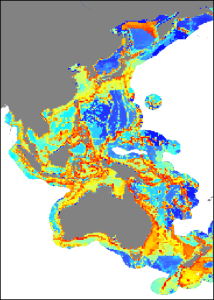New Study on Systematic Conservation in the West Pacific
08/07/2024
A new research paper highlighting innovative approaches to marine protected area (MPA) planning in the West Pacific, was recently published under the scope of MPA Europe. The study, led by international collaborators from China, showcases how systematic conservation planning can efficiently identify “Representative Biodiversity Areas” crucial for marine protection.
The research emphasizes the integration of various biodiversity measures, including species ranges, different marine biomes such as seagrass, kelp, mangroves, coral reefs, and comprehensive ecosystem models. This approach not only maps but also significantly refines the conservation strategy for the West Pacific, home to the world’s richest marine biodiversity.
The study’s findings are crucial, especially as they challenge the current MPA coverage under the global “30by30” initiative, which aims to protect 30% of the ocean by 2030. Results indicate that to effectively preserve biodiversity, over half of the West Pacific may need protection, far exceeding the current targets. This could reshape conservation priorities and strategies across the region.
This new paper provides a detailed analysis with about 55 km spatial resolution, a significant advance over previous global-scale efforts that typically mapped at around 100 km resolution. Such detailed mapping is vital for identifying critical areas that host a vast range of species and complex habitats, thereby ensuring more targeted and effective conservation efforts.
MPA Europe invites marine scientists, conservationists, policymakers, and anyone interested in marine biodiversity and conservation to read the full paper. This comprehensive study is a critical resource for anyone looking to understand or engage in marine spatial planning and conservation.




